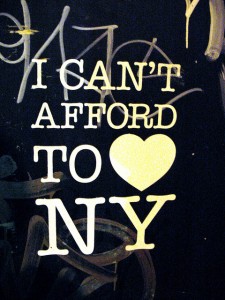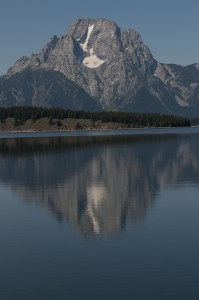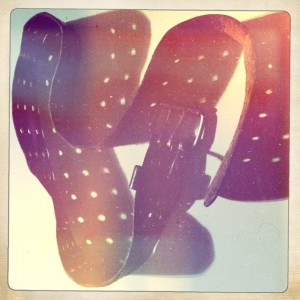By Zenzile Greene-Daniel
In December of last year, I was honored to be invited to participate in a special Brown Bag lunch at SPS in which I and three of my colleagues gave individual presentations on our use of the medium of photography. I was very excited to take part — and especially to learn more about the creative projects of my fellow workers.
Zenzile Greene – Daniel — Office Assistant Center for Worker Education at the Joseph S. Murphy Institute
Briefly describe the subject matter that you explored through photography and presented at SPS.
There was not one particular theme in of my photography that I presented. Instead, I discussed a few of my favorite photographic themes, as highlighted by images on my website, as well as talking a bit about what photography in general means to me, why it is important and how it has been a part of my life since I was born. My father took up the hobby while he served in Vietnam.
Pick one of the images in your presentation that is most meaningful for you and tell us why.
The portrait I took of a man in my neighborhood who calls himself “The Prince of Harlem” (featured above the title of this post) was the most meaningful for me, mostly because I am not in the habit of taking portraits of strangers in the street, let alone by their request. I’m much too shy. I am also very reluctant to taint the nature of candid shots of people by summoning the subject’s awareness with a direct request. So this photo is a kind of an anomaly for me. Originally shot in color, I felt that a black and white rendition would more effectively draw the viewer’s eye to composition as well as subject. “The Prince of Harlem,” a character that would spend his days walking up and down that corner of 125 and Lenox tossing a ball up and down, is fully inviting of the camera’s attention. I also like the story told by the frame of urban shopping chains on the left as well as the oncoming motion of traffic and people making their way forward just a few feet behind him.
What did it mean for you to be able to present your work and share a part of your life unrelated to the work you do at SPS to an audience of co-workers within a workspace?
I was thrilled to be asked to participate in this Brown Bag. The opportunity not only to talk about a medium of expression of which I am deeply passionate, but also to learn more from those who share a similar love is priceless to me. I enjoyed immensely learning about the different ways in which photography has played a unique role in the interests of my co-workers. For a moment while I watched the presentation, I imagined what a dynamic Urban Studies class this would make! Photography encompasses so many different issues, from the personal and intimate to the global and political and I was moved, inspired and incredibly impressed by the diverse ways in which these issues spoke through the imagery my colleagues created and chose to present.
Antonia Levy — Instructional Technology and Multimedia Manager, SPS
Briefly describe the subject matter that you explored through photography and presented at SPS.
I decided to focus on my graffiti photography. I started taking pictures of street art during a visit to Italy in 2008 and have been “collecting” them from wherever I go since. On my flickr page the images are organized by location, from Italy to Portugal to Berlin to — of course — New York. It’s become a colorful collection of a diverse set of artists, styles and (political) messages which I continuously enjoy adding to.
Pick one of the images in your presentation that is most meaningful for you and tell us why.
I chose this stencil — which popped up all over Williamsburg during the early days of gentrification in that neighborhood — because it represents what I like most about street art, aside from its artistic aspect: the way it’s being used by artists to convey sentiments or politics in very public, often wonderfully creative ways. There is humor, joy, love, grief, a call for action. It is a form of resistance that is both anonymous and personal, as many street artists do sign their work but try to hide their identity.
What did it mean for you to be able to present your work and share a part of your life unrelated to the work you do at SPS to an audience of co-workers within a workspace?
First of all, I loved the idea of this Brown Bag because it is a beautiful way to get to know a different side of your coworkers. And I was proud to be asked to participate! Nervous, too, because I had never presented my street art collection to an audience before. But the reaction was so touching… There was laughter in the audience, and I could feel how my enjoyment of this art was shared in the room. I still get emails from coworkers with links to street art news, or stopped in the hallway with questions about the presentation. In that way, it truly has become a vehicle to connect to coworkers in different ways, and I am looking forward to more Brown Bags for others to share their passions.
Jayne-Anne Sartoretto — Academic Advisor SPS
Briefly describe the subject matter which you explored through photography and presented at SPS.
I shared photos from a trip I took with my sister to the Northwest and Southwest. It was a celebration for completing my Masters in Higher Education. The photos were of Yellowstone National Park, Jackson Hole, The Teton Range, Bryce Canyon, Canyonlands National Park and Arches National Park. The formations were created through time by nature, and the beauty is astounding.
Pick one of the images in your presentation that is most meaningful for you and tell us why.
The reflection of The Teton Range is in Jackson Lake and captures the magnificence of the Teton Range. I have lived in an urban environment for many years. Exploring the northwest opened my horizon to how beautiful this country is. I have seen photos of Yellowstone Park and knew I would go there one day. It was a must-see in places to visit. To see this in person — the quietness of nature and the magnificence of The Tetons — was so moving and inspired me to explore other areas in the United States.
What did it mean for you to be able to present your work and share a part of your life unrelated to the work you do at SPS to an audience of co-workers within a workspace?
I was nervous, to be quite frank. I have been into photography for years, and it is a very personal journey. But I believe photos are to be shared. I was so touched by how much my co-workers enjoyed the photos I shared. Photos, for me, take me somewhere else for that time and moment I am seeing them. I get to go somewhere vicariously. I hoped it was a nice reprieve in the day for my coworkers who attended and that they were able to take a journey to the areas I shared. It was also great to see co-workers photos, and to hear the stories connected to their work.
Brian McDonald — Associate Director for Faculty/Staff Resources
Briefly describe the subject matter that you explored through photography and presented at SPS.
During a (long-standing) conversation with a friend (and co-worker) about our challenges with decluttering, we had both agreed to get rid of 100 objects in 100 days. Initially, this was no more than a decluttering challenge, and I was simply documenting the objects I had decided to get rid of. However, as the days went on, and I found myself reacting to these pictures, the project evolved into something that unexpectedly felt more creative to me than simply getting rid of useless crap. The 100 photographs of 100 objects is what I presented.
Pick one of the images in your presentation that is most meaningful for you and tell us why.
One facet of this project that was interesting was when newer images surprised me, becoming favorites, quite accidentally (although there were also frustrations and pressures when these fortunate accidents weren’t occurring).
Upon reflection, numerous images feel important to me for differing reasons. In terms of this project, however, the most meaningful image is probably the photograph of a belt I had taken about 3 weeks or so in. With the shadows, the object isn’t immediately identifiable as a belt; at first I thought this was a big problem, that the photograph wasn’t serving the goal of cataloging discarded objects. There was something about the abstract image that I liked though and I kept it. This was the moment my approach to the project changed completely, shifting away from focusing on the actual object I was planning to get rid of to what the final image would look like.
The belt image also seems somewhat provocative to me — I can’t quite figure out what exactly, and it’s maybe best not to try.
What did it mean for you to be able to present your work and share a part of your life unrelated to the work you do at SPS to an audience of co-workers within a work space?
I consider myself private, and an introvert, so it was not actually in my character to participate in a presentation such as this one. Additionally, several of my colleagues and I feel that although SPS is a college, the milieu is often more like an office space — thus not the most encouraging environment for creativity or self-expression. That said, so many of us spend so much of our time at “the office”, the majority of our waking lives, and I’ve come to recognize how tiresome and unnecessary it can be to accept the downtrodden aspect of office culture. Instead, I’ve become increasingly interested in promoting employee engagement, insofar as I am able, and acting with more conviction. Participating in this presentation was a perfect encapsulation of these objectives and ultimately an amazing experience — in fact it was both fun and inspiring to see the truly impressive work of Antonia, Jaye-Anne, and Zenzile (and I feel an extra connection to them from having this shared experience).
I was also really encouraged by the reaction of our colleagues. At times it has seemed that sharing parts of my life (unrelated to the work I do at SPS) would somehow be unwelcome (or risky) but the response of the community, in this instance, was totally rewarding. I hope there continue to be opportunities to experience each other as complete individuals, even on a day-to-day level.






